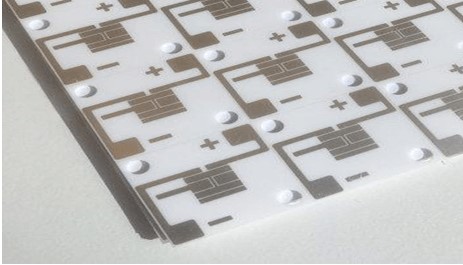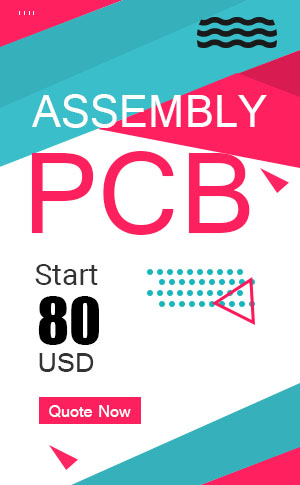General, quoting & support.
Add: Building E, No.58, Nanchang Road, Xixiang , Baoan District Shenzhen City, Guangdong, China
Tel : 0755-27348887
Fax : 0755-27349876
E-mail : svc@pcbastore.com
What Is Ceramic PCB?
Simon / 2021-01-30
Contents [hide]
What is ceramic PCB? What is the best ceramic PCB material? What are the applications of the Ceramic PCB? You are here means you are interested to know more about ceramic PCB, applications, and the ceramic PCB manufacturing process. In this article, we will answer all your queries related to ceramic PCB.
The ceramic circuit boards are considered better than traditional printed circuit boards due to their number of benefits. These boards feature minimal expansion coefficient and high thermal conductivity. Both these features make ceramic PCBs less complicated and more versatile than their traditional counterpart. They also offer better performance. Go through the following to have a better understanding of the ceramic PCBs. You will be aware of the types, benefits, and applications. Let's first know what exactly it is.

What is Ceramic PCB?
Ceramic PCBs have been used in the electronic industry for many years. Ceramic PCB is a relatively new addition. It offers more flexiblity to PCB designers. The board is mostly used in modern electronics. The product comes as a mixture of the organic binder, heat conduction organic PCB, and heat-conducting ceramic powder. The end product is created at 9-20W/m thermal conductivity. In brief, we can say that a ceramic PCB uses ceramic base material to offer the desired benefits.
It uses highly thermally conductive materials that include beryllium oxide, aluminum nitride, and alumina. The ceramic PCB material will act fast to transfer the heat away from hot spots. Also, the material will work efficiently to dissipate the heat all over the surface. In addition to the material, the ceramic PCB uses LAM technology fabrication. The LAM technology is a laser rapid activation metallization technology.
The material, LAM technology fabrication, and the ceramic PCB manufacturing process make the product super versatile. These new additions can replace traditional printed circuit boards with enhanced performance and simple construction.
Types of Ceramic PCB
There are different types of ceramic PCBs. The most popular types are the high temperature, low temperature, and thick film ceramic. Let's cover all the types to enable you to understand the specific features and manufacturing process of each.
High Temperature
High temperature is the most appreciated one. From the name, it is clear that this type is made for high temperatures. It is also referred to as a high-temperature co-fired ceramic circuit. These circuit boards go through a unique manufacturing process. The process mixes solvent, plasticizer, adhesive, aluminum oxide, and lubricant to develop new ceramics.
Once the new ceramic is developed, a coat is given to the material and then they apply circuit tracing on molybdenum or tungsten metals. After this step, they will bake the circuits between 1600 degrees and 1700 degrees Celsius for around forty-eight hours after the lamination. The baking process will be done in a specific gaseous environment that includes hydrogen gas.
Low Temperature
The manufacturing process of the low temperature ceramic PCB is different from the high temperature or HTCC type. The low temperature ceramic PCB is created with adhesive substance and crystal glass. Both these materials are used on a metal sheet with the gold paste. After this step, the board will be cut and laminated. Finally, the circuit will be kept in a gaseous oven at 900 degrees Celsius.
The low temperature ceramic PCB is benefited from improved shrink tolerance and less warpage. In brief, we can say that they will have superior thermal conductivity and mechanical intensity compared to other types including HTCCs. The thermal benefit of the low temperature PCB gives it a preference while working with some heat-omitting products such as LED lights.
Thick Film Ceramic
Another popular type of the ceramic PCB is thick film ceramic. The manufacturing process will be different from the above two. The process involves dielectric and gold pastes. Both these are applied on the ceramic base material. After applying both these pastes, the material will be baked at the 1000 degrees Celsius temperature or below. These types are mostly used in the printed circuit board manufacturing process. The credit goes to the high conductor paste. Like the previous two types, it is also considered a better option compared to traditional PCBs. The thick film ceramic is more appreciated since it prevents the copper from oxidizing. When the manufacturers are worried about oxidation, they choose this type.
These are three different types of ceramic PCBs. All of them are different and follow a specific process. The manufacturing process makes them capable of different applications. Many people do not understand how many layers are used for ceramic PCB. There is no specific number. It will depend on the type of ceramic PCB you are using. Mostly, two layers are used. However, it can be many more depending on the purpose of usage and properties of the product.
Advantages of Ceramic PCB
A ceramic PCB is considered the best option for different applications due to its number of benefits. Heat dissipation gives it the preference over traditional PCBs. The components of a ceramic PCB will be placed on the board directly. There will not be any isolation layer. Therefore, the flow of the heat throughout the board will be more efficient compared to conventional ones.
In addition to the above, the ceramic material might be affected by the high operating temperatures. The thermal expansion will be low, and that will offer better compatibility for PCB designs. Also, the substrate materials make ceramic PCBs more useful than traditional PCBs. In the traditional options, glass fiber, polyimide, phenolic resin, and polystyrene substrate materials are used. However, ceramic PCBs features resist chemical erosion, excellent thermal conductivity, mechanical intensity compatibility, and high-density tracing. Here are some other benefits that make ceramic PCBs a preferred choice.
High Thermal Expansion
Ceramic PCB is the most popular in the electronic industry because of this unique feature. It provides high thermal coefficient expansion. It offers high thermal conductivity even at elevated temperatures. This specific feature makes it an ideal choice for many devices.
Stability
The ceramic can offer better stability. Users can expect a stable dielectric property because of its base material. The balance might be changed into restricted radio frequency loss and that can improve the applicability of the devices. Ceramic is a tough material. It offers natural resistance to many chemicals. As a result, the chemical resistance will convert into resistance to solvents, moistures, and consumables.
Versatility
A metal core PCB can be used for many different applications with its high melting point. The sintering technology makes a noble metal paste a highly unfailing conductor. The use of ceramic will impact the high processing temperatures when there will be different devices for some specific operating temperatures. The best thing about the ceramic PCB is it will offer good thermal conductivity while distributing the heat to the different positions of the device.
Durability
From the above, you might have an idea about ceramic PCB manufacturing. The ceramic material itself offers a lasting result. The toughness will protect your board from daily wear and tear. Also, it features slow aging property, and that will minimize the possibility of replacement. In addition to the above, the high thermal resistance can slow down the decomposition process, and that will ultimately ensure a durable result.
Adaptability
One of the key benefits of the ceramic is that it uses a metal core. The metal core is used in the engineering process of the ceramic PCB. It can be changed to the rigid carrier to offer mechanical stiffness. The mechanical stiffness also enables the end product to be used between solids and fluids. The wear resistance and toughness make it ideal for different industrial positions.
Applications of Ceramic PCB
A ceramic PCB is considered the best for different applications due to its low CTE, high thermal conductivity, chemical erosion resistance, and low dielectric constant. Here are some applications of ceramic PCBs.
Memory Module
A Japanese company created a 1Mbit SRAM memory module by using a multi-layer ceramic PCB that contains 4 1C chips. The outcome is appreciated for high-density assembly as well as high reliability. Similarly, a USA company had developed telecommunication products, aerospace products, and a missile with ceramic PCBs. In brief, we can say that a ceramic PCB can be considered in an extreme environment. Also, the packaging components and multilayer ceramic PCBs provide shock vibration resistance at the warhead.
Transmission Module
An American company is manufacturing a transmission module with ceramic PCB for radar. The aluminum nitride material features low CTE and high thermal conductivity to create the best foundation for the transmission module.
Interconnect Board
Ceramic PCBs are mostly used in electronics. These boards support the miniaturization of devices. A ceramic PCB has more probabilities in the multilayer interconnect board application.
Digital PCB
A Japanese company has used low temperature PCB to fabricate digital PCB. It has reduced the parasitic capacitance by up to nine-tenths. It reduces the weight of the circuit as well as the volume.
Conclusion
Ceramic PCBs come with many advanced features to dominate the industry and become the first choice for different types of applications. It is the most popular in the electronic industry. As different types of ceramic PCBs are available, manufacturers should weigh the positives and negatives of each to know which one can be the best choice for their specific requirements.







